Introduction to Congenital Heart Disease in Children
Congenital heart diseases (CHDs) represent the most frequent birth defects globally and pose a critical challenge to pediatric healthcare systems. Affecting roughly 1% of live births worldwide, CHDs encompass a diverse range of structural heart abnormalities present from birth. Over the past decades, significant advances in medical and surgical treatment have transformed outcomes for affected children, increasing survival rates and improving quality of life. This article explores current epidemiological data, survival statistics, treatment effectiveness, and long-term outcomes for children living with CHDs, highlighting the complexities and progress in managing these conditions.
Prevalence and Epidemiology of Congenital Heart Diseases in Children
 Congenital heart diseases (CHDs) are recognized as the most common birth defect globally. They affect about 1% of all live births, with recent data indicating roughly 40,000 infants born with CHDs annually in the United States alone. These figures may underrepresent the true burden due to improved detection methods, such as advanced prenatal ultrasound and echocardiography, which have led to increased diagnosis over recent decades.
Congenital heart diseases (CHDs) are recognized as the most common birth defect globally. They affect about 1% of all live births, with recent data indicating roughly 40,000 infants born with CHDs annually in the United States alone. These figures may underrepresent the true burden due to improved detection methods, such as advanced prenatal ultrasound and echocardiography, which have led to increased diagnosis over recent decades.
Worldwide, the prevalence of CHD has increased, with an estimated 4.18 million children under five years old affected in 2021. South Asia reports the highest number of cases, reflecting its large population, but regional mortality rates vary. Oceania experiences the highest mortality and disability-adjusted life years (DALYs), highlighting significant disparities in healthcare access and treatment capabilities.
The burden of CHD is not uniform across regions; it correlates with socio-economic and healthcare infrastructure factors. Regions with higher socio-demographic indices (SDI) generally observe higher reported prevalence, largely due to better detection and reporting systems. Conversely, lower SDI areas tend to have higher mortality and lower diagnosis rates, underscoring challenges in healthcare access.
In terms of diagnosis and long-term management, most children with CHD — about 65.4% — are diagnosed with simple, non-complex lesions such as atrial septal defects. However, a notable proportion suffer from complex conditions, often accompanied by additional health issues; over half have at least one other chronic health condition, and about 10% have associated genetic syndromes like Down syndrome.
Survivability has markedly improved, with recent data showing that approximately 95% of children with non-critical CHDs are expected to reach at least 18 years of age. For those with more severe, critical conditions, survival to 18 has increased to 69%, compared to just 67% several decades ago. Though these advances are promising, the overall long-term prognosis varies significantly with lesion type, demographic factors, and access to care.
Understanding the regional and demographic variations in CHD prevalence and outcomes is essential for healthcare planning. It enables targeted resource allocation, improves screening programs, and shapes interventions to reduce mortality and enhance quality of life for affected children,
Key Statistics on the Incidence and Types of CHD in Children
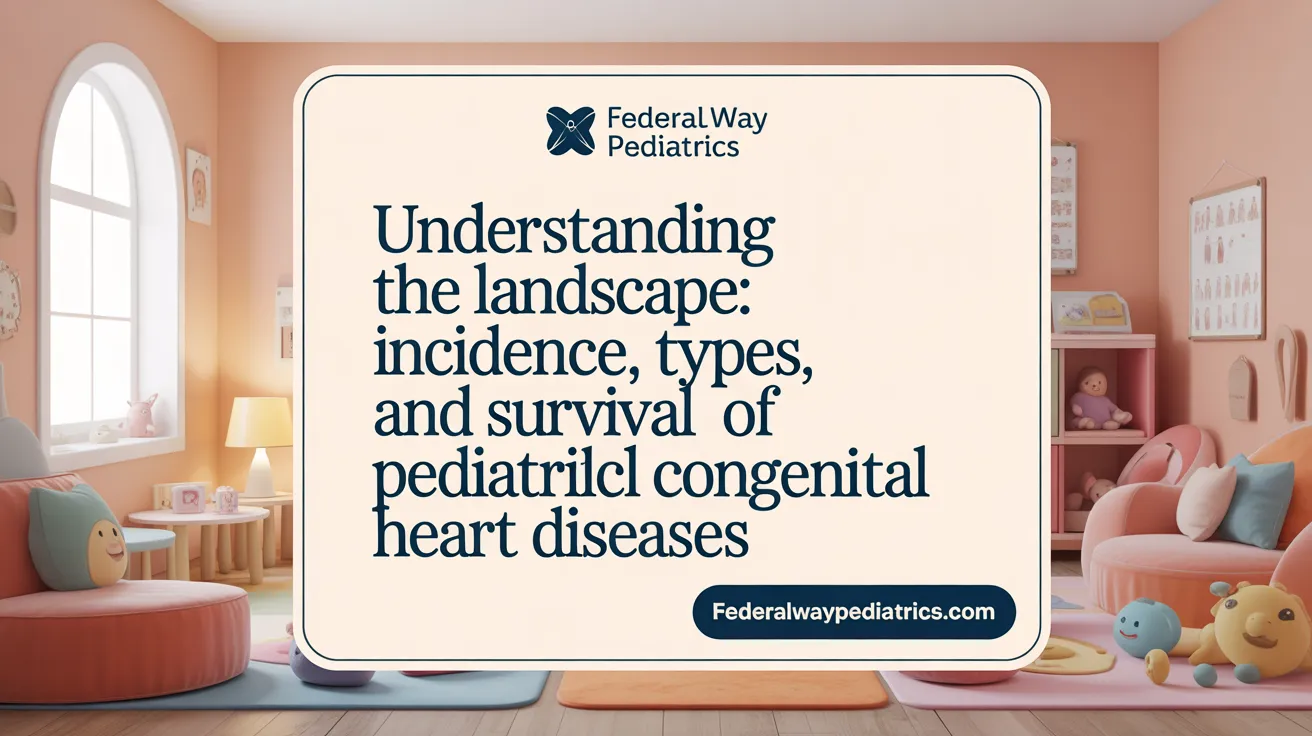 Congenital heart defects (CHD) are the most common birth defects in the United States. Every year, approximately 40,000 babies are born with a CHD, which equates to about 1 in every 110 births. This high prevalence highlights the importance of early diagnosis and intervention.
Congenital heart defects (CHD) are the most common birth defects in the United States. Every year, approximately 40,000 babies are born with a CHD, which equates to about 1 in every 110 births. This high prevalence highlights the importance of early diagnosis and intervention.
In terms of severity, roughly 25% of these infants are born with critical heart defects. These conditions often require urgent surgeries or medical procedures within their first year of life to ensure survival. Non-critical CHDs, on the other hand, tend to have better outcomes, with an estimated one-year survival rate of about 97%.
The most common congenital heart defects in children include atrial septal defects and ventricular septal defects, which are often classified as simple or noncomplex. Among the nine sentinel CHDs, hypoplastic left heart syndrome stands out for its severity and low 10-year survival rate of around 50%. Conversely, defects like ventricular septal defect have much higher survival rates, approaching 97%.
Genetic syndromes frequently associated with CHD include Trisomy 21, also known as Down syndrome, which is diagnosed in about 5.1% of children with the condition. Additionally, about 10% of children with CHD have concurrent genetic abnormalities or other complex health issues. Many of these children also have at least one other chronic condition, often involving the nervous system or mental health, adding to the complexity of care.
Understanding these statistics is crucial for healthcare planning and resource allocation, as well as for developing targeted treatments and support systems for affected children and their families.
Survival Rates and Trends in Pediatric Congenital Heart Disease
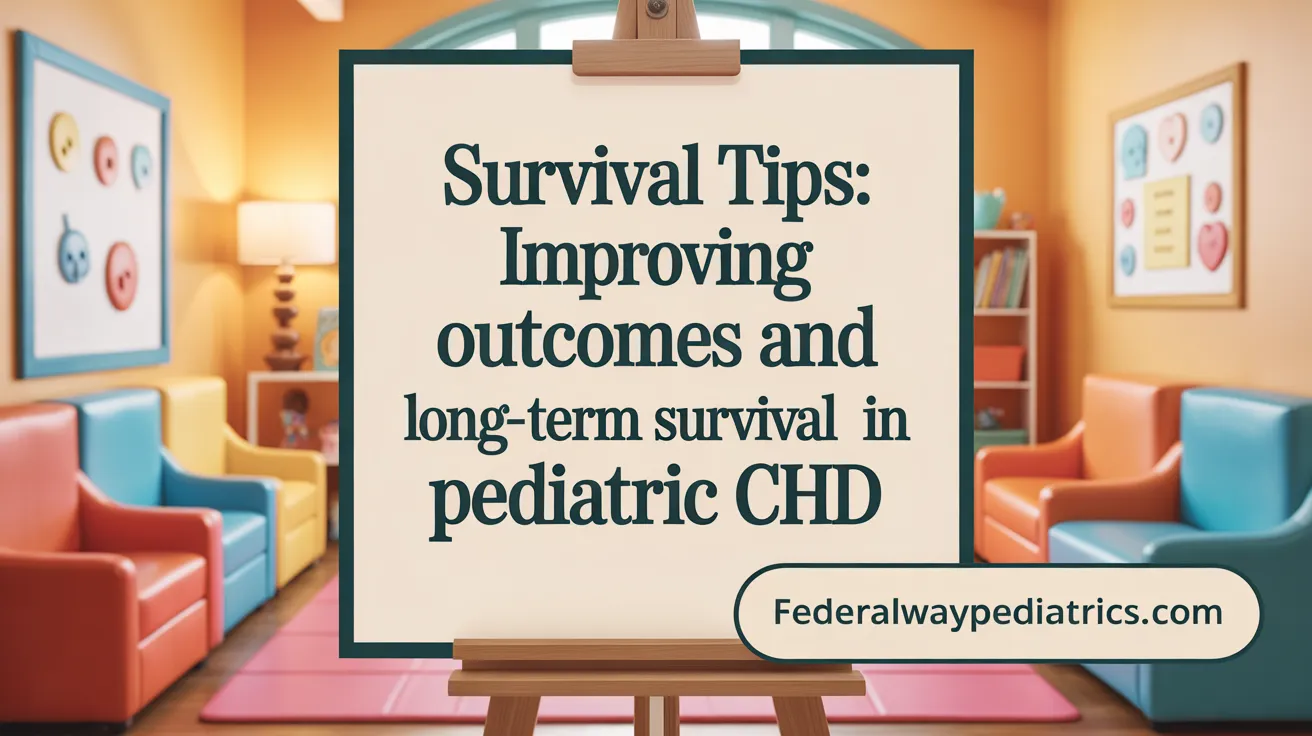
What are the survival rates and long-term outcomes for children with congenital heart diseases?
Over recent decades, the outlook for children with congenital heart disease (CHD) has vastly improved. Currently, more than 97% of children born with CHD are expected to survive into adulthood. This remarkable progress is largely due to advances in diagnosis, surgical techniques, and minimally invasive interventions.
The survival rate in infancy, especially within the first year, varies depending on the severity of the defect. For non-critical CHD, approximately 95% of infants survive beyond their first year. In contrast, those born with critical conditions face a survival rate of about 75% during the first year, although this has increased from roughly 67% during 1979-1993.
Long-term prognoses depend heavily on the specific diagnosis and severity. Children with more complex or severe defects, such as hypoplastic left heart syndrome (HLHS), have a lower 10-year survival rate compared to less severe cases like ventricular septal defect, which has a survival rate nearing 97%. Despite these differences, many children go on to lead healthy lives into adulthood.
The highest mortality risk occurs early in life, particularly within the first four years, especially for those with complex or non-conotruncal lesions. Yet, survival rates have steadily improved across birth decades, and recent data from children born between 2010-2017 show survival stabilizing at about 97%. This indicates that ongoing advances have continued to benefit even the most severe cases.
Compared to the general population, children with CHD still face higher mortality and health challenges. While the long-term survival has significantly increased, they often require lifelong medical management for ongoing cardiovascular issues, developmental concerns, or disabilities.
Overall, the trajectory of survival and long-term outcomes for children with congenital heart disease has shifted positively. With sustained medical progress and early interventions, many affected children are now expected to grow into healthy adults, though continuous care and monitoring remain essential.
Mortality, Morbidity, and Prognosis in Pediatric CHD Patients
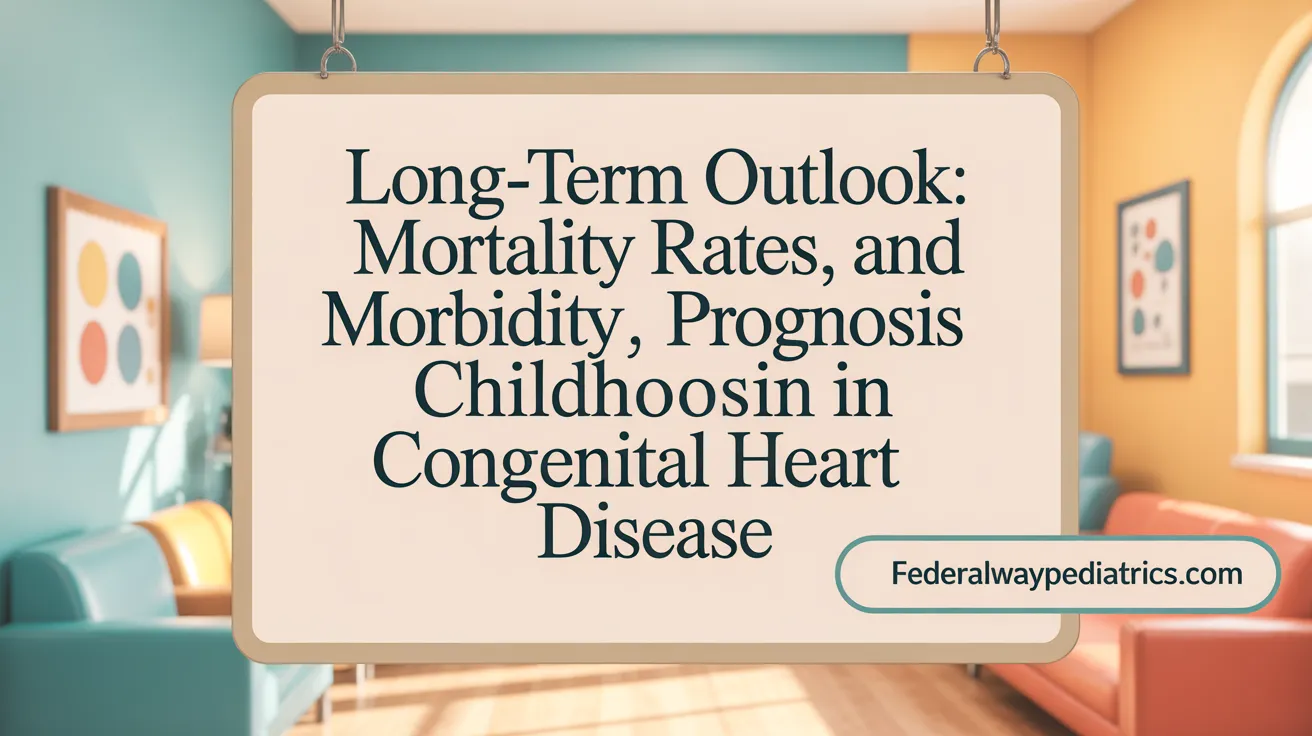
What are the mortality, morbidity, and prognosis statistics associated with congenital heart diseases in pediatric patients?
Congenital heart diseases (CHDs) are the most common birth defect globally, with an estimated 1% of live births affected. In the United States, approximately 40,000 infants are born each year with CHD, making it a significant public health concern. Over the past few decades, advancements in medical care have dramatically improved survival rates. Currently, about 97% of infants with non-critical CHDs survive beyond their first year, while about 75% with critical CHDs survive to age one.
Progress does not stop at childhood. Overall, roughly 81% of children with CHDs are expected to reach at least 35 years of age, reflecting substantial improvements in treatment and management. However, the risk of death remains higher than in the general population, especially during early life. Infants face the highest mortality risk, with nearly 17.7 times the mortality rate of children without CHD. Despite this, the mortality rate during the first four years of life has decreased significantly, with survival reaching approximately 83% for children born between 2010 and 2017.
Globally, CHD-related mortality has fallen by over 56% since 1990, partly due to better detection, surgical techniques, and access to care. Nonetheless, disparities remain; for example, children in low-resource settings or with coexisting genetic or extracardiac conditions tend to have poorer outcomes. The prognosis for individuals with CHD depends heavily on the type and complexity of the defect. Less complex lesions, such as ventricular septal defects, show excellent outcomes, with survival rates nearing 97%, whereas more complex conditions like hypoplastic left heart syndrome have a 10-year survival of around 50%.
Morbidity is also a crucial concern. More than half of children with CHD experience additional health challenges, including neurological, developmental, and physical disabilities. Adults living with CHD often report ongoing cardiovascular issues, with about 40% reporting disabilities, primarily cognitive impairments. This highlights the importance of lifelong monitoring and care.
Although treatment improvements have shortened lifespan gaps, individuals with complex CHD still face increased health risks. Continual research and healthcare efforts are essential to further improve long-term outcomes, emphasizing a need for tailored, lifelong management strategies for all ages.
Treatment Modalities for Congenital Heart Diseases in Children
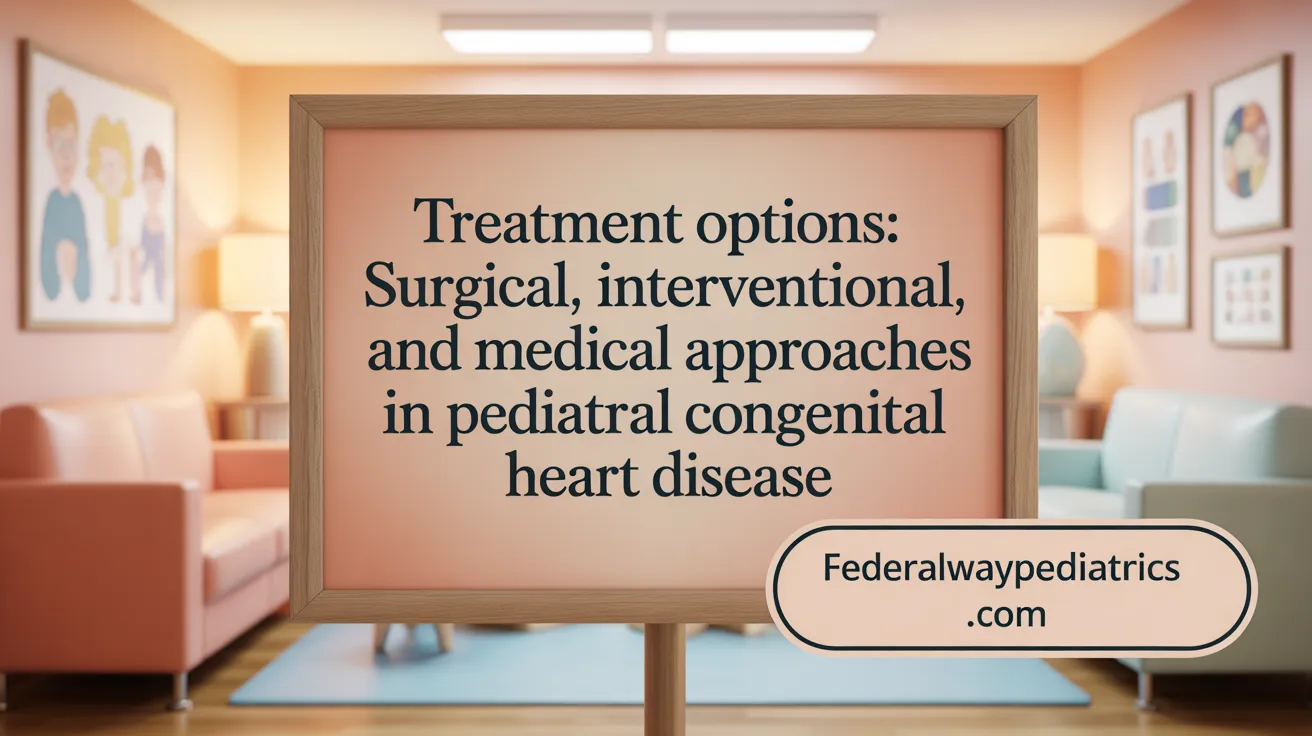
What treatment options exist for congenital heart diseases in children, and how effective are they?
Children born with congenital heart defects have a variety of treatment options tailored to the specific type and severity of their condition. These interventions aim to improve heart function, alleviate symptoms, and prolong survival.
Medical Management and Monitoring
Mild congenital heart defects, such as small holes in the heart, often require only regular medical follow-up. Physicians regularly monitor these patients through physical exams, echocardiograms, and other diagnostic tests. Some children may need medications to manage symptoms or prevent complications, but many can lead relatively normal lives with careful oversight.
Interventional Catheterization Procedures
Minimally invasive procedures using catheter techniques have become common, especially for certain types of defects like valve stenosis or to close septal defects. Techniques such as balloon valvuloplasty and device closures via catheter are effective, often reducing the need for open-heart surgery. These procedures usually have shorter recovery times and lower complication rates, significantly improving outcomes.
Surgical Repair Techniques
For more complex or severe defects, surgical correction remains the standard treatment. Surgeons may perform open-heart surgeries, such as the arterial switch operation for transposition of the great arteries or the Norwood procedure for hypoplastic left heart syndrome.
Innovations like staged surgeries—including the Glenn and Fontan procedures—allow children with cyanotic defects to survive longer and enjoy better quality of life. Long-term outcomes have improved dramatically over the past decades due to advancements in surgical techniques and perioperative care.
Heart Transplantation
In cases where other treatments cannot restore normal heart function, heart transplantation is an option. It’s particularly considered for children with end-stage heart failure or certain complex congenital conditions unresponsive to surgical repairs. Although transplantation carries risks like rejection and the need for lifelong immunosuppression, it can be life-saving and offers extended survival.
Criteria for Treatment Selection
Choosing the appropriate treatment depends on several factors:
- Type and severity of the defect: Some defects are minor and only need monitoring, while others require immediate surgical intervention.
- Patient's age and overall health: Younger or sicker children may need staged or less invasive procedures.
- Presence of additional health issues: Genetic syndromes or extracardiac conditions can influence treatment choices.
- Potential for growth and long-term outcomes: Treatments are selected to maximize survival and quality of life over time.
Overall, advances in diagnosis, minimally invasive tools, and surgical techniques have significantly increased the success rates for treating congenital heart diseases, with many children now surviving into adulthood with good health and well-managed conditions.
Surgical Outcomes and Mortality Rates in CHD Treatment
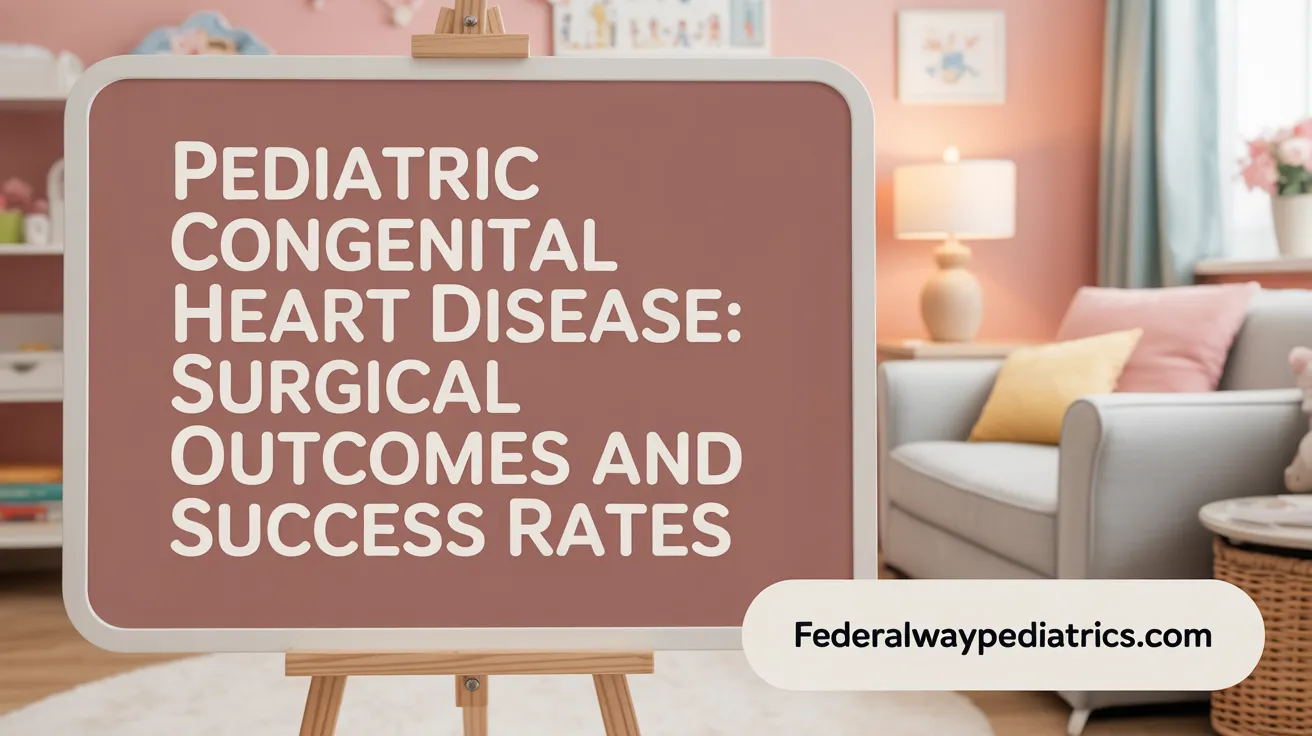
What are the in-hospital mortality rates for different levels of CHD complexity?
In-hospital mortality rates for congenital heart disease (CHD) treatment vary according to the severity of the condition. For milder cases, such as mild CHD, the mortality rate after surgery is quite low at around 0.5%, and even lower at 0.1% following interventional procedures. In contrast, more complex forms of CHD tend to have higher in-hospital mortality rates, ranging from approximately 2.5% to 3.8%.
How does post-surgical survival improve over time?
Thanks to advancements in surgical techniques and medical care, survival rates after surgery have markedly improved over the years. Many children now survive into adolescence and adulthood. For example, the 10-year survival rate for children with certain high-risk lesions like hypoplastic left heart syndrome (HLHS) has increased significantly, from about 48.7% in early studies to 64.8% more recently. Overall, the satisfaction with treatment outcomes has improved, though challenges remain with complex cases.
What advances have contributed to reducing operative mortality?
Several innovations have decreased operative mortality in CHD patients. These include improved surgical procedures, better perioperative care, and the development of less invasive techniques. For instance, high-precision surgeries such as double-root translocation have emerged, offering potential cures for some complex conditions. Additionally, establishing comprehensive pediatric cardiology teams and enhancing hospital collaborative efforts are critical steps toward improving outcomes.
What are reintervention rates for various lesion types?
Reintervention is often necessary to address residual or recurrent issues, with rates depending heavily on the type of heart defect. For example, at age 10, only about 6.1% of children with ventricular septal defects (VSD) require further procedures. Conversely, conditions like pulmonary atresia have much higher reintervention rates, reaching approximately 66.8%. These disparities highlight the importance of ongoing monitoring and tailored treatment strategies based on the specific CHD diagnosis.
| Lesion Type | 10-Year Survival Rate | Reintervention Rate at Age 10 | Notes |
|---|---|---|---|
| Ventricular Septal Defect (VSD) | ~96.9% | ~6.1% | Most common; generally good prognosis |
| Hypoplastic Left Heart Syndrome (HLHS) | 57.6% | Data limited | Highest mortality among major CHDs |
| Pulmonary Atresia | Lower than 50% | ~66.8% | More complex; higher likelihood of additional procedures |
Understanding these variations helps healthcare providers optimize care plans and improve long-term outcomes for children with congenital heart defects.
Influence of Birth and Demographic Factors on CHD Survival
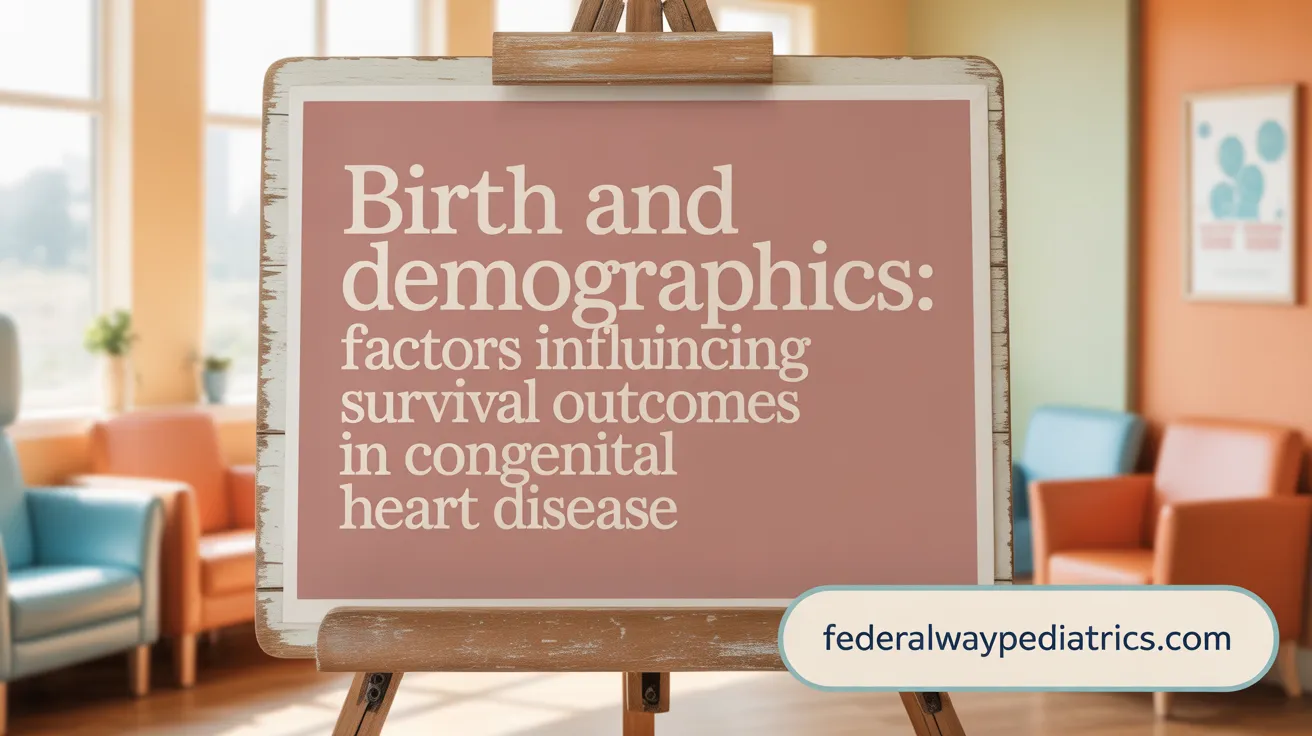
Which factors influence treatment success and survival in children with congenital heart diseases?
Survival and treatment success in children with congenital heart disease (CHD) are affected by various factors. The severity and type of the heart defect play a crucial role; for example, complex lesions like hypoplastic left heart syndrome (HLHS) are associated with higher mortality. Advances in medical procedures and early diagnosis help improve outcomes.
Birth characteristics are particularly influential. Premature infants and those with low birth weight tend to have lower survival rates across many CHD types. These initially fragile conditions increase the risk of complications during and after treatment.
Genetic syndromes, such as Down syndrome, and extracardiac defects, are linked to lower survival, especially within the first year of life. Children with additional health conditions often face more complex medical management.
Racial and ethnic disparities significantly impact outcomes. Non-Hispanic Black and Hispanic infants generally experience lower survival rates compared to non-Hispanic White infants. These differences are partly due to variations in healthcare access, socioeconomic status, and early intervention opportunities.
Socioeconomic factors and access to healthcare services play a vital part in survival prospects. Children from disadvantaged backgrounds or those lacking adequate medical coverage often have delayed diagnoses and limited treatment options.
Despite these challenges, ongoing improvements in surgical techniques, treatment protocols, and health policies continue to increase survival rates. For instance, innovative surgeries, use of ventricular assist devices, and early screening programs are helping to reduce mortality and disability.
Understanding how these various factors influence outcomes is essential for healthcare planning. It allows providers to identify high-risk groups and allocate resources more effectively, ultimately improving the quality of lifelong care for children with CHD.
Long-Term Health Challenges in Children with Congenital Heart Disease

What is the impact of congenital heart diseases on child health and lifespan?
Congenital heart diseases (CHDs) are the most common type of birth defect, affecting nearly 1% of all live births in the United States each year. This means approximately 40,000 babies are born with a heart defect annually. Thanks to significant advances in medical technology and surgical techniques, the survival outlook for children with CHDs has markedly improved over the past few decades.
Today, about 90% of children with congenital heart defects survive into adulthood, and many live well into old age. The overall survival rate has increased dramatically, with some conditions like simple ventricular septal defects having survival rates of over 97% into childhood, while more complex conditions like hypoplastic left heart syndrome have seen improvements from less than 50% to above 64% over recent years.
However, despite these positive trends, children with CHDs face ongoing health challenges. Many require multiple surgeries or interventions throughout their lives, especially those born with severe or complex defects. The highest risk of mortality is during the early years of life, particularly within the first four years.
Beyond survival, children with CHDs often experience long-term health issues. Neurodevelopmental and cognitive impairments are common, affecting learning, behavior, and overall development. More than half of children with CHDs also have additional health conditions like genetic syndromes or other chronic illnesses, which can complicate their health trajectory.
Furthermore, children with CHDs are more likely to have special healthcare needs. They often require ongoing medical care, including routine follow-ups, medication management, and sometimes additional surgeries. These ongoing requirements can impact their quality of life and emotional well-being.
Exercise limitations and arrhythmia risk are also concerns. Many children may experience fatigue, shortness of breath, or irregular heartbeats, which can restrict their participation in physical activities. The propensity for arrhythmias adds another layer of long-term cardiovascular risk that warrants regular monitoring.
Psychosocial impacts, such as anxiety, depression, and social isolation, are also prevalent among children and their families. These issues can influence mental health and overall well-being, emphasizing the need for a comprehensive, lifelong approach to care.
In summary, while survival for children with congenital heart disease has improved considerably, they often face a complex array of ongoing health challenges that can influence their lifespan and quality of life. Lifelong medical management, tailored interventions, and psychosocial support are essential to help these individuals lead healthy and fulfilling lives.
Global and Regional Disparities in CHD Outcomes
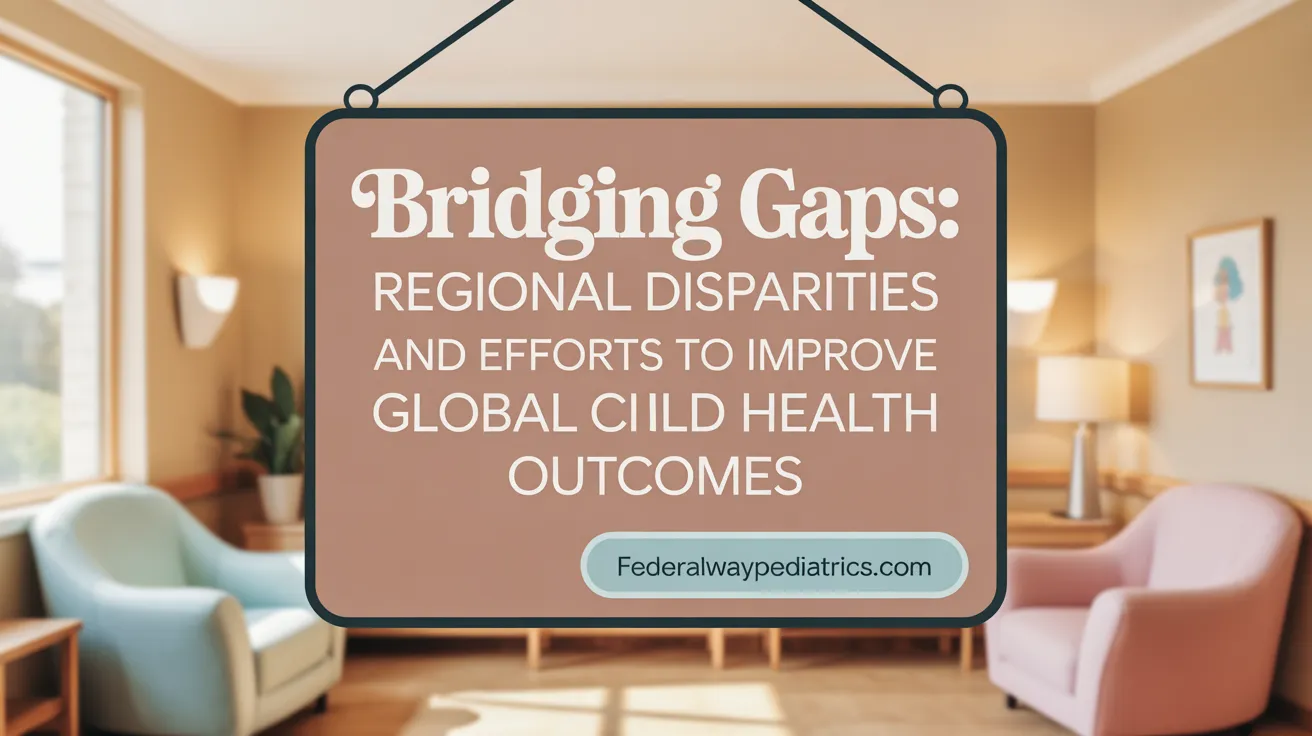
How do mortality and DALYs vary across regions?
The impact of congenital heart disease (CHD) significantly differs worldwide. High-income regions tend to report lower mortality rates and disability-adjusted life years (DALYs), indicating better managed outcomes. Conversely, low-income areas often face higher mortality and DALYs, reflecting challenges like limited access to specialized care.
For example, South Asia has the highest number of CHD cases, yet Oceania reports the highest DALY and mortality rates. These disparities emphasize how healthcare resources influence survival and quality of life.
What role does socio-demographic index (SDI) play?
The socio-demographic index (SDI)—a measure combining income, education, and fertility rates—correlates strongly with CHD outcomes. Regions with higher SDI scores tend to have better detection, treatment, and survival rates. This relationship highlights that technological and healthcare advancements in wealthier areas contribute to improved outcomes.
Study data shows that regions with better SDI levels experience more significant decreases in mortality and DALYs over time. Countries with lower SDI, however, still face persistent challenges in managing CHD due to infrastructure gaps.
How does healthcare infrastructure impact CHD outcomes?
Robust healthcare systems enable early diagnosis, timely surgeries, and ongoing monitoring, all crucial for improving survival. Advanced treatment procedures and skilled pediatric cardiology teams are more accessible in well-developed health systems.
In countries with limited healthcare infrastructure, the lack of specialized care results in higher mortality rates, especially during early childhood and among children with complex lesions like hypoplastic left heart syndrome (HLHS). Efforts to strengthen healthcare delivery can substantially alter these outcomes.
CHD burden in high vs low income areas
High-income areas generally enjoy lower CHD-related mortality, higher survival to adulthood, and better management of associated health issues. By contrast, low-income regions often struggle with late diagnosis, fewer intervention options, and higher rates of disability after treatment.
This global disparity underscores the importance of international collaborations, resource allocation, and capacity-building initiatives to bridge the gap in CHD care.
| Region | Average Mortality Rate | DALYs per 100,000 | Healthcare Infrastructure Score | Typical Outcome Features |
|---|---|---|---|---|
| High-income | Lower than global avg | Lower | Excellent | Better survival, fewer complications |
| Low-income | Higher than global avg | Higher | Limited | Higher early-life mortality, more disabilities |
| South Asia | Highest cases globally | Elevated | Improving but uneven | Greater diagnostic delays, higher intervention gap |
| Oceania | High mortality & DALYs | Highest | Advanced in some countries | Significant regional disparities |
Understanding these variations is essential for targeted interventions and policy planning to improve CHD outcomes worldwide.
Population-Based and Longitudinal Outcome Studies in Pediatric CHD
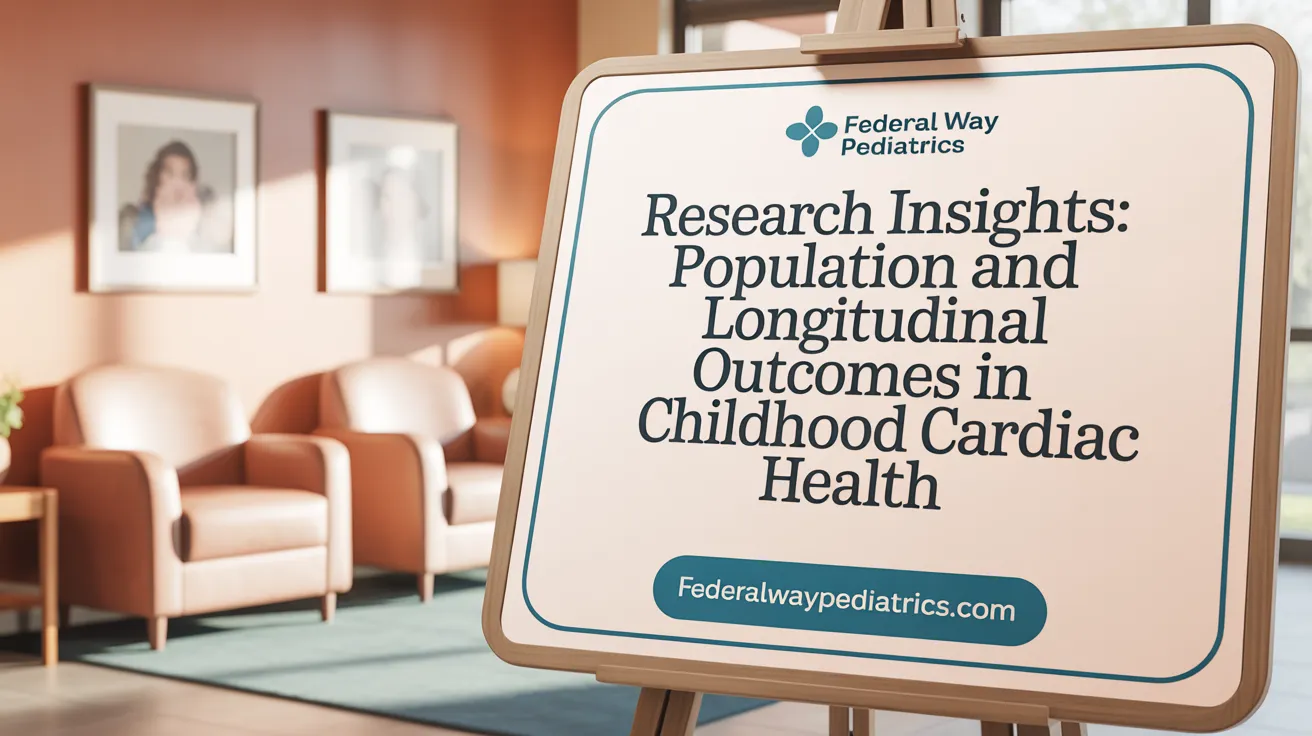
What do population-based and longitudinal outcome studies reveal about children with congenital heart conditions?
Research that tracks large groups of children over many years provides valuable insights into how congenital heart disease (CHD) affects long-term health and development. These studies show that most children with CHD survive into adulthood, with survival rates reaching over 97% for many diagnoses. However, the outcome varies depending on the specific type and complexity of the defect.
Children with less complex or isolated CHDs, such as ventricular septal defects, often have excellent long-term survival, with about 95% expected to reach at least 18 years of age. Conversely, those with complex lesions like hypoplastic left heart syndrome (HLHS) face a tougher prognosis, with lower survival rates and higher likelihood of needing additional surgeries or interventions.
Beyond survival, these studies highlight that many children with CHD face other health challenges. More than half of the children have at least one additional health condition, such as neurological or metabolic disorders. About 10% may also have genetic syndromes like Down syndrome, which can further complicate health outcomes.
Developmental and educational issues are common among children with CHD. Many experience delays in cognitive development, learning difficulties, and problems with social integration. They are more likely to need special educational support, have higher rates of absenteeism, and face difficulties in employment as they grow older.
Social challenges extend into adult life. Adults with CHD often report ongoing cardiovascular issues and disabilities. Approximately 40% have some form of disability, mainly cognitive or neurological, which can impact daily functioning and employment.
Disparities also exist based on socioeconomic and demographic factors. Children from marginalized communities, such as non-Hispanic Black and Hispanic populations, tend to have lower survival rates and access to healthcare services, emphasizing the importance of equitable care.
To improve outcomes, a multidisciplinary approach involving cardiologists, neurologists, psychologists, educators, and social workers is essential. This team-based care helps manage not just the heart condition but also developmental, educational, and psychosocial needs.
Overall, these population and longitudinal studies underscore the importance of ongoing monitoring and tailored interventions to enhance quality of life, educational attainment, and social integration for children with CHD, paving the way for healthier adult lives.
Advances in Diagnostic Techniques Enhancing CHD Detection
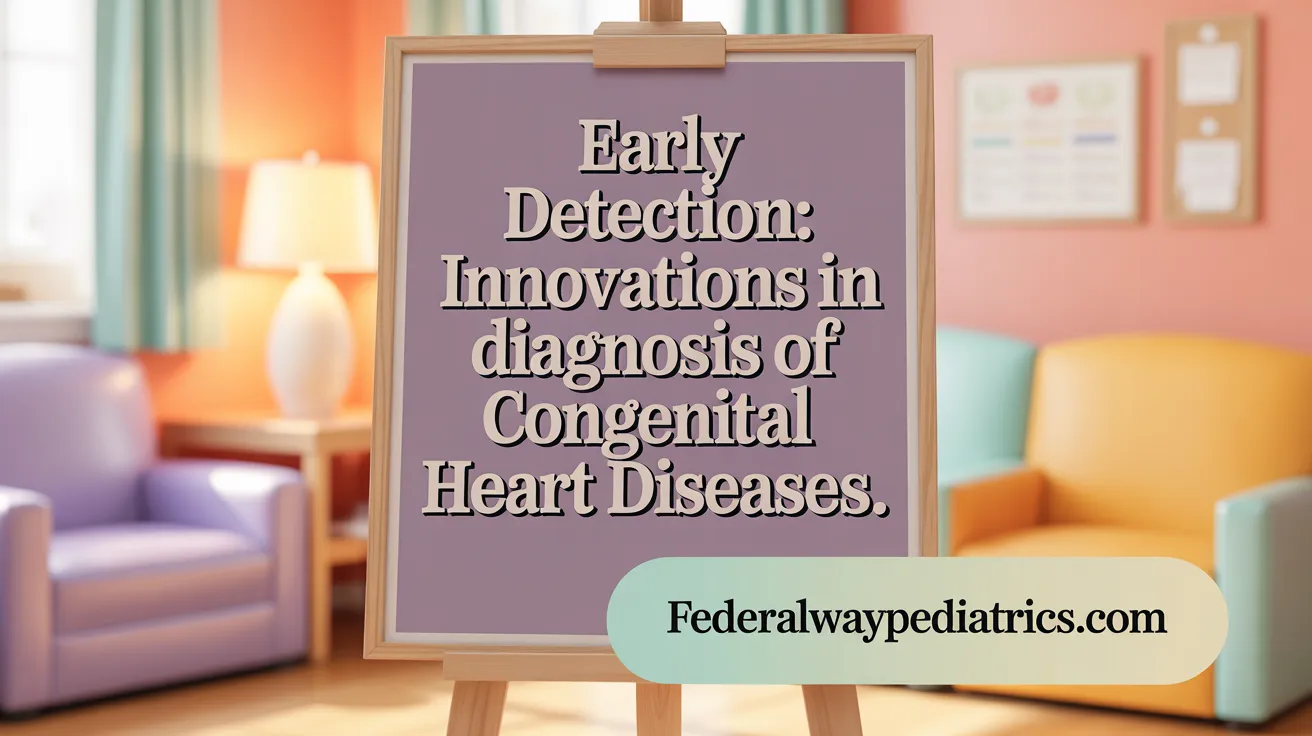
Improvements in Prenatal Ultrasound
Modern prenatal ultrasounds have become more sophisticated, allowing healthcare providers to detect congenital heart defects (CHDs) early in pregnancy. These advanced ultrasound technologies enable detailed visualization of the fetus’s heart structures, making it possible to identify abnormalities that previously went unnoticed. Early detection through these methods helps in planning timely interventions and improving overall outcomes.
Increased Availability of Echocardiography
Echocardiography, a key imaging tool for diagnosing heart defects, has expanded in availability and quality. This non-invasive procedure provides real-time images of the heart’s anatomy and function, aiding in precise diagnosis. Increased access to echocardiography across hospitals and clinics means more babies can be diagnosed early, even before symptoms appear.
Enhanced Screening Methods
Enhanced screening approaches, such as pulse oximetry testing for newborns, have improved the early detection of critical CHDs. The widespread use of these simple, non-invasive tests helps identify newborns with signs of congenital heart problems that require further evaluation. Together with detailed imaging, these methods contribute to a comprehensive screening strategy that catches issues soon after birth.
Impact on Early Diagnosis and Management
The advances in prenatal ultrasound and echocardiography, coupled with more effective screening techniques, have significantly increased early diagnosis rates of CHD. Early detection allows healthcare providers to plan prompt interventions, whether through surgery or medication, which can be life-saving. It also facilitates better long-term management, as doctors can monitor the child's condition from an early stage, improving survival and quality of life for affected children.
Role of Genetic and Environmental Factors in CHD Development

How do maternal infections and conditions influence the risk of congenital heart defects?
Maternal infections during pregnancy, such as rubella, and health conditions like diabetes, significantly increase the risk of congenital heart defects (CHD) in infants. These infections can interfere with normal fetal development, leading to structural heart anomalies.
What impact do genetic syndromes like Down syndrome have on heart defect prevalence?
Genetic syndromes, particularly Down syndrome (trisomy 21), are strongly associated with CHDs. About 5.1% of children with congenital heart defects also have Down syndrome, often presenting complex cardiac issues that require specialized care. Other genetic abnormalities, approximately 10% of CHD cases, further elevate the risk, underscoring the importance of genetic screening.
How do environmental risk factors such as smoking and medication use contribute?
Exposure to harmful environmental factors, including smoking, alcohol, and particular medications during pregnancy, can increase the likelihood of heart defects. These substances may disrupt fetal heart development, adding to the spectrum of risks that can be mitigated through prenatal care and lifestyle modifications.
| Risk Factor Type | Examples | Impact on Fetal Heart Development |
|---|---|---|
| Maternal infections & health conditions | Rubella, diabetes | Can cause structural anomalies and congenital defects |
| Genetic syndromes | Down syndrome, other chromosomal abnormalities | Associated with high prevalence of complex CHDs |
| Environmental exposures | Smoking, alcohol, specific medications | Disrupt fetal development process, increasing defect risks |
Understanding these factors helps in early diagnosis, targeted interventions, and informed counseling for expectant mothers, aiming to reduce the incidence and severity of congenital heart defects.
Epidemiological Trends and Data Accuracy in CHD
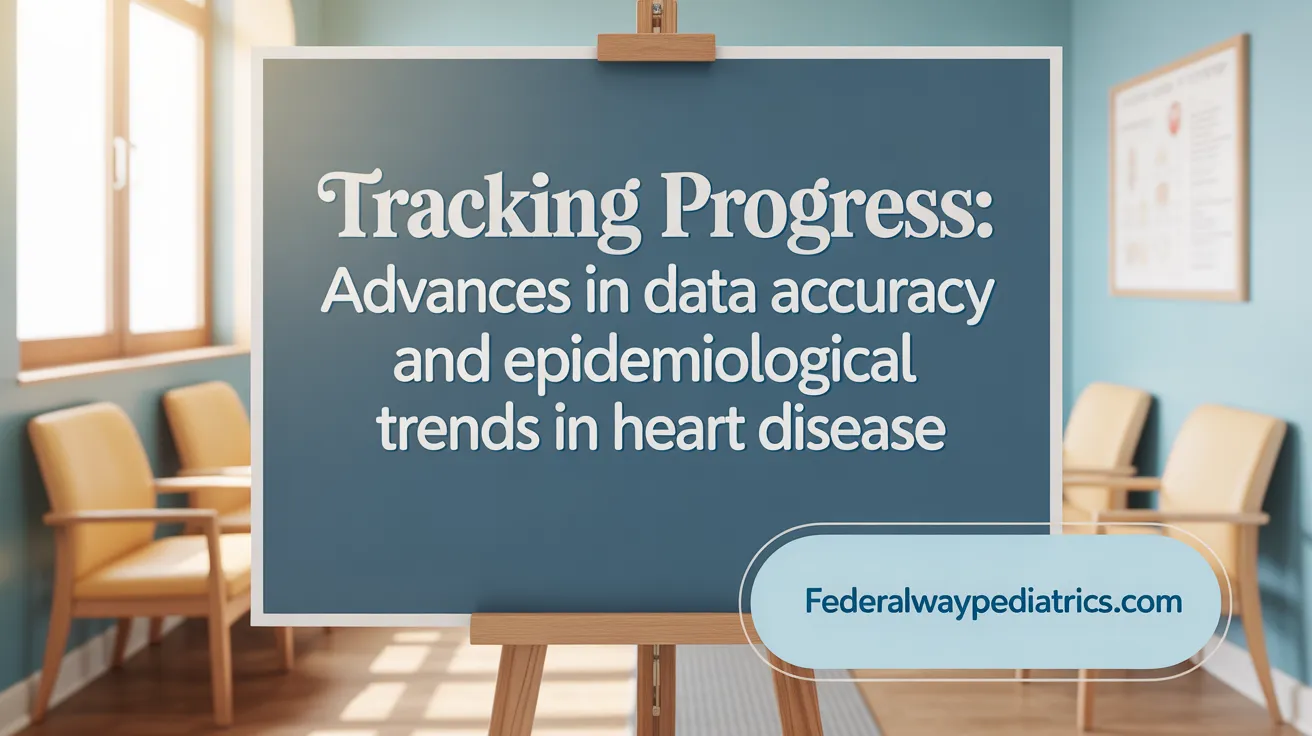
How does improved data collection impact our understanding of congenital heart disease (CHD)?
Advancements in data collection methods have significantly enhanced our understanding of how common CHD is. Modern approaches, like all-payer claims data, allow researchers to capture a broader and more accurate picture than traditional registries.
With better data gathering, estimates of CHD prevalence are often higher, revealing that many cases may have gone unnoticed in the past. This improvement is partly due to enhanced screening techniques, such as prenatal ultrasounds and echocardiography, which help identify cases earlier and more reliably.
The increased detection contributes to a more precise understanding of the true scope of CHD, informing healthcare policies and resource planning.
What are the differences in detection rates between registries and all-payer claims data?
Registries, collected from selected hospitals or specialized centers, often underestimate the number of children with CHD because they might miss outpatient or undiagnosed cases.
In contrast, all-payer claims data encompass records from every type of healthcare payer, including private insurers, Medicaid, and others. This comprehensive approach tends to identify more cases, representing a more accurate count of CHD prevalence.
For example, recent studies using all-payer claims data indicate that nearly 2% of children in Colorado had diagnosed heart defects, a figure that exceeds previous registry-based estimates.
This shows that relying solely on registries may lead to underestimating how many children are affected and understate the burden of the disease.
Why is comprehensive epidemiological data about CHD important?
Accurate data is essential for planning effective healthcare services. Knowing the true prevalence helps allocate resources appropriately, design targeted prevention strategies, and improve screening programs.
Furthermore, detailed epidemiological data facilitates research on risk factors, disparities, and long-term health outcomes. It also highlights disparities among different populations, such as racial and socioeconomic differences, guiding efforts to address healthcare inequities.
In summary, collecting thorough and precise epidemiological data ensures that health systems can better serve children with CHD throughout their lives, from early diagnosis to adult care.
The Burden of CHD on Healthcare Systems and Families
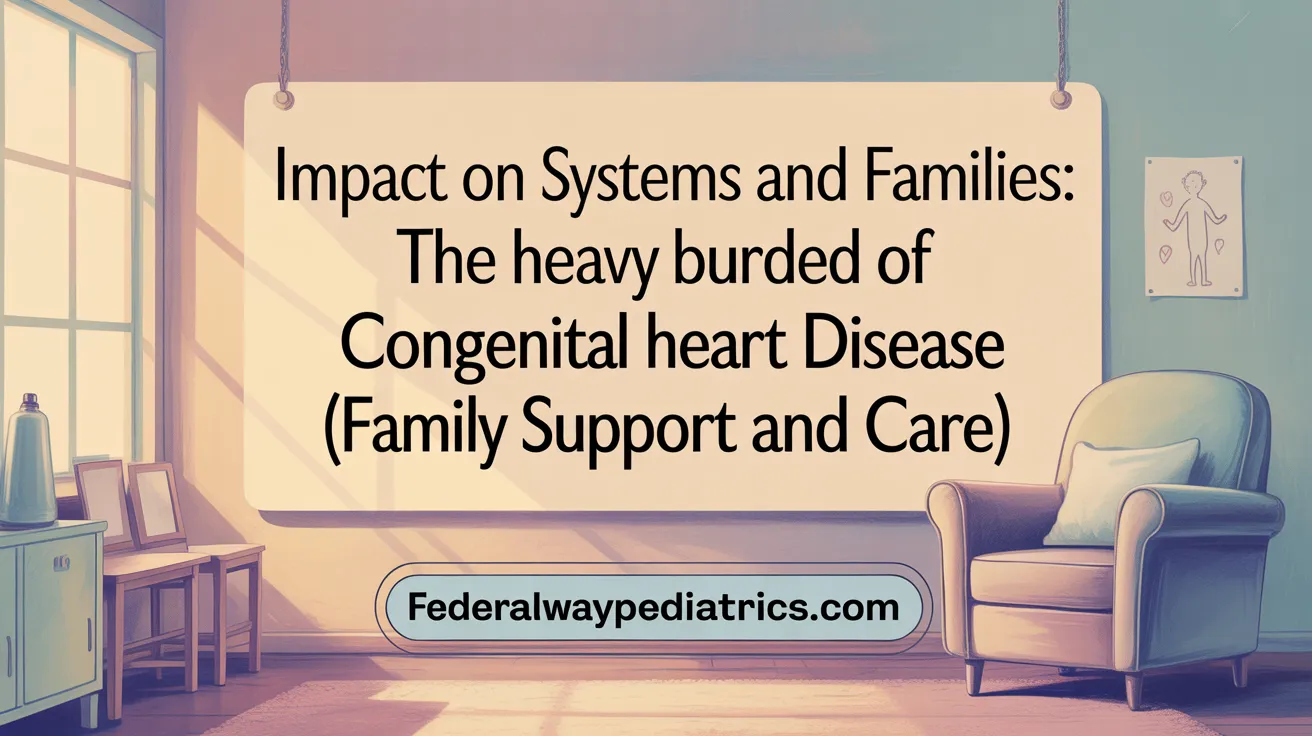
How does congenital heart disease (CHD) impact resource allocation within healthcare systems?
CHD, being the most common birth defect, significantly strains healthcare resources. The need for specialized surgical procedures, ongoing medical monitoring, and reinterventions especially in complex cases, requires substantial investment in healthcare facilities and trained personnel. Advances in treatment have pushed survival rates higher, but these also mean long-term costs associated with managing chronic conditions and follow-up care.
Why is the development of specialized pediatric cardiology teams necessary?
Children born with CHD often require complex interventions from a multidisciplinary team of specialists. Establishing cohesive pediatric cardiology teams ensures accurate diagnosis, timely surgeries, and consistent follow-up care. These teams coordinate efforts across hospitals, improving outcomes and reducing mortality, particularly during the critical early years.
What is the economic and emotional toll on families dealing with CHD?
Families facing CHD experience considerable emotional stress, often feeling overwhelmed by the medical journey ahead. The financial burden is also substantial, considering hospital stays, surgeries, ongoing medication, and sometimes long-term treatment. These challenges are more pronounced in regions with less healthcare coverage or access.
Why are coordinated care models important for children and adults with CHD?
A cohesive approach optimizes how medical teams plan and deliver care over the lifespan of a person with CHD. Coordinated care ensures ongoing monitoring, timely interventions, and support services, which are crucial given that many children survive into adulthood but face long-term health issues. Such models not only enhance health outcomes but also reduce the emotional and financial strain on families.
| Aspect | Impact | Additional Details |
|---|---|---|
| Resource allocation | High demand for specialized procedures | Long-term care needs increase system burden |
| Pediatric teams | Improved survival and management | Multidisciplinary approach required |
| Family impact | Emotional distress and financial costs | Ongoing treatment and support needed |
| Care models | Enhance outcomes and efficiency | Critical for lifelong management |
Effective management of CHD necessitates addressing both medical and socio-economic challenges. Developing robust resource strategies and comprehensive care teams can better support affected individuals and their families, ultimately shaping healthier futures.
Long-Term Management and Surveillance Strategies for CHD Patients
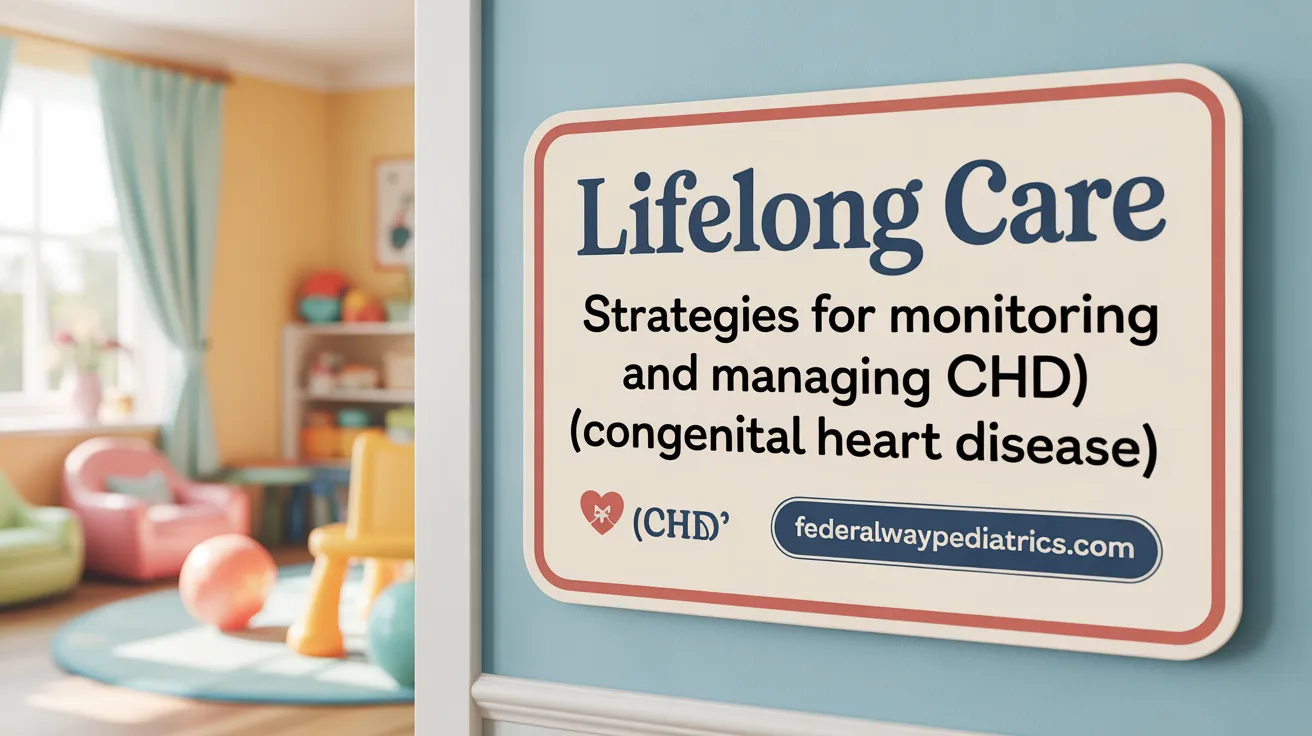
Why Is Lifelong Follow-Up Important?
Patients with congenital heart defects (CHDs) require continuous medical care throughout their lives. Even after successful surgeries or interventions, they remain at risk for future health issues such as arrhythmias, heart failure, or other cardiovascular complications.
Regular check-ups help detect and treat problems early, improving overall quality of life. This ongoing surveillance addresses not only the heart's health but also monitors for associated conditions like developmental delays or genetic syndromes.
Monitoring for Complications and Reinterventions
Many children and adults with CHD may need additional procedures over time. Common reasons for reinterventions include worsening valve function, arrhythmias, or residual defects.
Healthcare providers typically use imaging techniques such as echocardiograms, MRIs, and sometimes cardiac catheterizations to assess heart health periodically. This regular monitoring guides decisions on whether further surgical or catheter-based interventions are needed.
Transition to Adult Congenital Heart Disease Care
As children with CHD grow into adulthood, transitioning their care from pediatric to adult specialists is vital. This process ensures continuity, addresses age-specific health needs, and fosters independence.
Adult congenital heart disease (ACHD) programs focus on managing long-term risks, functional capacity, and screening for late complications. Proper transfer of medical records and education about their condition empower patients to advocate for their health.
A Multidisciplinary Approach to Care
Managing CHD isn't solely the responsibility of cardiologists. A team approach enhances outcomes and might include cardiologists, cardiac surgeons, nurses, genetic counselors, psychologists, and primary care providers.
This collaborative model helps address various needs, from medical management to mental health and developmental support. It ensures comprehensive care tailored to each individual’s unique profile.
| Aspect of Care | Focus | Typical Interventions | Long-Term Goals |
|---|---|---|---|
| Follow-Up | Heart function monitoring | Echocardiograms, MRIs | Detect issues early, optimize treatment |
| Reinterventions | Address residual or new defects | Surgeries, catheter-based procedures | Reduce complications and improve quality of life |
| Transition | Adult care readiness | Education, record transfer | Ensure seamless care continuity |
| Multidisciplinary | Holistic support | Medical, psychological, social | Improve overall well-being and functioning |
Ongoing research into long-term management strategies aims to refine these approaches further, ensuring that individuals with CHD can live healthier lives well into adulthood.
Emerging Treatments and Innovations in Pediatric CHD Care

Latest surgical techniques
Recent advances have enhanced the effectiveness and safety of surgical options for congenital heart defects (CHDs). Innovations like minimally invasive surgeries and complex procedures such as double-root translocation have improved outcomes for severe cases. These procedures are tailored to reduce recovery time and minimize complications, providing better quality of life for young patients.
Use of ventricular assist devices
Ventricular assist devices (VADs) are increasingly used in children with severe heart failure due to complex CHDs. These mechanical pumps support heart function temporarily or long-term, buying time for growth or waiting for transplantation. VAD technology has improved significantly, with newer models being more durable and better suited for small children, helping many survive until they can receive definitive surgery or a transplant.
Fetal interventions
Fetal surgery and procedures are emerging as a way to treat certain congenital heart defects before birth. These interventions aim to correct or stabilize heart conditions early on, potentially reducing the severity of the defect and improving survival rates. Techniques like fetal balloon valvuloplasty have shown promise, especially for conditions such as hypoplastic left heart syndrome, giving affected infants a better chance post-birth.
New technological developments
Innovations in imaging, diagnostics, and treatment devices continue to transform pediatric CHD care. Advanced imaging technologies like 3D echocardiography and MRI enable more precise diagnosis and surgical planning. Additionally, the development of innovative biomaterials and 3D-printed heart models assist surgeons in complex repairs. These technological breakthroughs enhance the accuracy, safety, and outcomes of CHD treatments.
| Innovation Area | Description | Impact |
|---|---|---|
| Surgical techniques | Minimally invasive and complex surgeries like translocation | Faster recovery, fewer complications |
| Ventricular assist devices | Mechanical support for severe heart failure | Increased survival, bridge to transplant |
| Fetal interventions | In-utero procedures to correct defects | Improved postnatal health outcomes |
| Technological developments | Advanced imaging, biomaterials, 3D printing | Precision, safer surgeries, better planning |
Impact of Socioeconomic Factors on Access to CHD Care
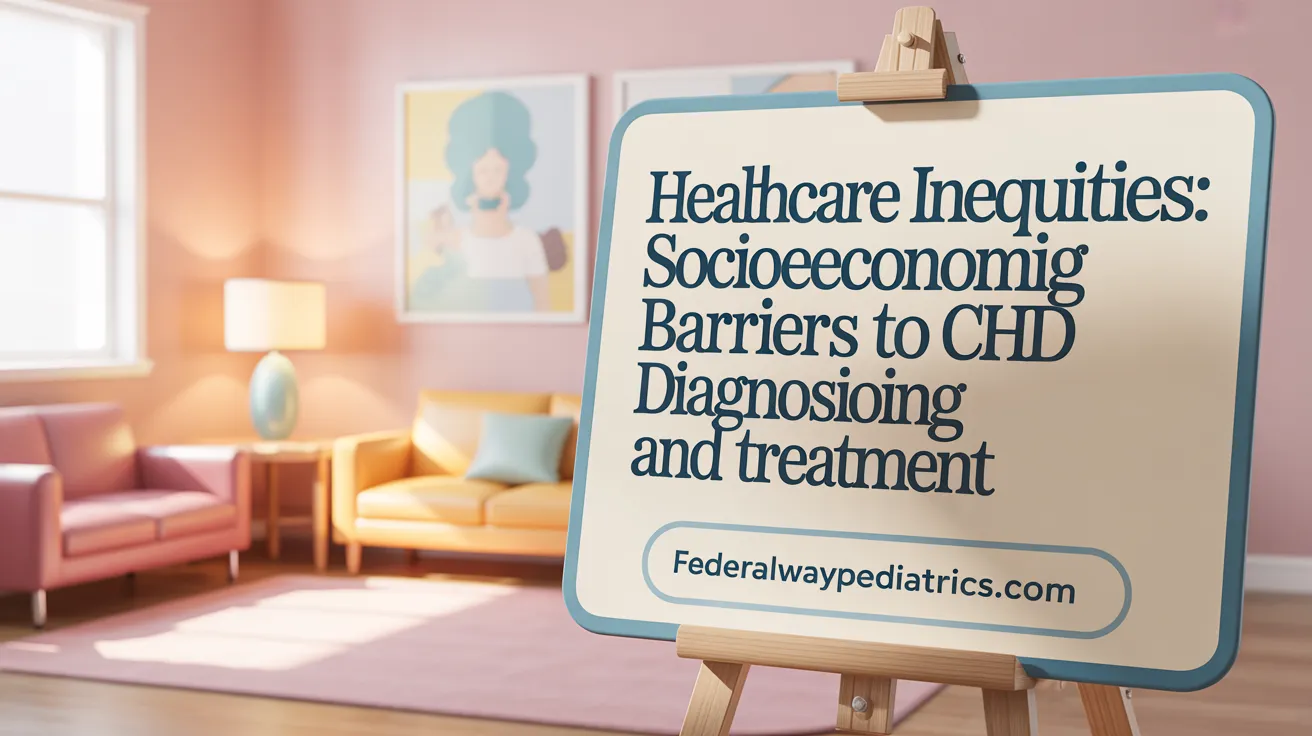
How does insurance status, particularly Medicaid coverage, influence care for children with congenital heart defects?
Insurance status plays a significant role in access to treatment for children with congenital heart defects (CHD). Data from Colorado shows that over half of children diagnosed with CHD are insured through Medicaid, indicating that socioeconomic status and access to insurance can affect early diagnosis and ongoing care. Medicaid coverage often provides essential coverage for surgeries, interventions, and follow-up care.
What are the disparities in health outcomes related to socioeconomic status?
Studies reveal persistent health disparities based on socioeconomic factors. For example, racial and ethnic minorities, including Hispanic and non-Hispanic Black infants, tend to have lower survival rates compared to non-Hispanic White infants. These disparities are influenced by differences in access to quality prenatal care, early diagnosis, and specialized treatment facilities.
How do geographic and racial/ethnic differences impact treatment availability?
Geographical barriers impact the availability of specialized cardiac care, especially in rural or underserved areas. Regions with fewer healthcare resources experience delayed diagnoses and limited intervention options. Racial and ethnic disparities further compound these challenges, with minorities often facing systemic obstacles such as less access to specialized pediatric cardiology teams.
Below is a summary table highlighting how various socioeconomic factors influence access to and outcomes in CHD care:
| Factor | Impact | Explanation |
|---|---|---|
| Insurance coverage | Access to care | Medicaid-insured children are more likely to receive timely diagnosis and treatment |
| Racial/ethnic disparities | Survival rates | Non-Hispanic White infants generally have higher survival rates due to better access |
| Geographic location | Treatment availability | Urban centers offer more specialized services; rural regions face scarcity |
| Socioeconomic status | Long-term outcomes | Higher income correlates with better health literacy and access to advanced treatment |
Understanding and addressing these disparities are crucial for ensuring equitable care and improving survival and quality of life for all children with CHD.
Special Considerations for Complex CHD Conditions

What are the outcomes for hypoplastic left heart syndrome (HLHS)?
Children diagnosed with hypoplastic left heart syndrome generally face serious challenges, but recent advances have improved survival rates. The 10-year survival rate for HLHS is approximately 57.6%. Surgical procedures like the Norwood, Glenn, and Fontan operations are essential for managing HLHS, though they often require multiple interventions over a lifetime.
How do functionally univentricular hearts fare long-term?
Children with functionally univentricular hearts, where one ventricle supports circulation, have variable outcomes. The overall 10-year survival rate is around 96.9%. While initial surgeries can be successful, many may require additional procedures later, emphasizing the importance of ongoing monitoring.
Which lesion groups are considered high risk?
Among the various congenital heart defect types, certain high-risk groups include hypoplastic left heart syndrome, transposition of the great arteries, and pulmonary atresia. These conditions are associated with higher mortality and often need complex surgical interventions. For example, pulmonary atresia has a reintervention rate of about 66.8% by age 10, highlighting the intensive care required.
What are specific survival and reintervention statistics for complex CHDs?
Survival heavily depends on lesion type. For complex conditions like hypoplastic left heart syndrome, the 10-year survival hovers around 57.6%. In contrast, simpler defects like ventricular septal defects have a prognosis of approximately 96.9% survival at 10 years. Reintervention rates are also notable; pulmonary atresia has a high reintervention rate of nearly 66.8%, signifying ongoing management needs.
| Condition | 10-Year Survival Rate | Reintervention Rate | Notes |
|---|---|---|---|
| Hypoplastic Left Heart Syndrome | 57.6% | Not specified | High complexity, requires multiple surgeries |
| Functionally Univentricular | 96.9% | Not specified | Ongoing care, multiple surgeries possible |
| Pulmonary Atresia | Approx. 50% | 66.8% | Most complex, high reintervention rates |
| Ventricular Septal Defect | 96.9% | Low | Most common, simplest outcomes |
Understanding these distinctions helps in planning treatment and long-term care for children with complex congenital heart defects.
Summary of Treatment Outcomes and Need for Continuous Improvement

How have survival rates stabilized in recent years?
Recent studies show that survival rates for children with congenital heart defects (CHDs) have plateaued over the last decade, with survival in children born between 2010 and 2017 reaching approximately 97%. This stabilization indicates that while advancements have significantly increased short-term survival, further improvements in long-term outcomes may require new strategies.
What ongoing challenges exist in reducing early life mortality?
Despite progress, mortality remains relatively high during early life, especially within the first four years. The highest mortality risk occurs during this period, with complex lesions like hypoplastic left heart syndrome (HLHS) showing the lowest long-term survival rates of around 50% over ten years. These challenges highlight the need for better early intervention and ongoing care.
Why is national audit and quality monitoring important?
Consistent tracking through national audits and routine outcome monitoring is critical. They help identify disparities in survival linked to factors like race, ethnicity, socioeconomic status, and access to care. Reliable data allows healthcare providers to improve treatment protocols, ensure equitable healthcare, and enhance overall management of CHDs.
How can research and care coordination be improved?
Enhancing research efforts to develop better surgical techniques, medical treatments, and long-term follow-up strategies remains vital. Additionally, establishing cohesive pediatric cardiology teams and improving hospital collaboration ensure that patients receive comprehensive, continuous care throughout their lives. These initiatives are essential for further reducing mortality and improving quality of life for individuals with congenital heart defects.
| Aspect | Progress | Ongoing Challenges | Recommendations |
|---|---|---|---|
| Survival rates | Stabilized at ~97% | Early childhood mortality | Focus on early diagnosis and intervention |
| Long-term outcomes | Improved, >81% survival to age 35 | Late complications and disabilities | Regular long-term monitoring |
| Data collection | Enhanced through national audits | Disparities based on demographics | Improve access and equity |
Conclusion: Enhancing Survival and Quality of Life in Pediatric CHD
The landscape of congenital heart diseases in children has evolved substantially over recent decades, marked by significant advances in diagnosis, treatment, and long-term care. While survival rates have improved dramatically, especially with the advent of sophisticated surgical and interventional techniques, many children face ongoing health and developmental challenges that require comprehensive, lifelong management. Epidemiological data reveal important disparities by region, socioeconomic status, and race, underscoring the necessity for equitable healthcare access and focused policies. Future progress hinges on continued innovations, improved population-based monitoring, and multidisciplinary approaches tailored to the complex needs of this growing population. Ultimately, the goal remains to enhance not only survival but also the quality of life for children born with congenital heart disease and support their journey from infancy into adulthood and beyond.
References
- Data and Statistics | Congenital Heart Defects (CHDs)
- Survival in Children With Congenital Heart Disease
- Longitudinal Trends in Pediatric Survival by Congenital ...
- Population-Based Estimates of the Prevalence of Children ...
- Global, regional, and national epidemiology of congenital ...
- About CHDs | Congenital Heart Defects
- Congenital heart defect rates may be much higher than ...
- Evaluating Long‐Term Outcomes of Children Undergoing ...
- Current treatment outcomes of congenital heart disease ...
- Congenital heart defects in children - Symptoms and causes
